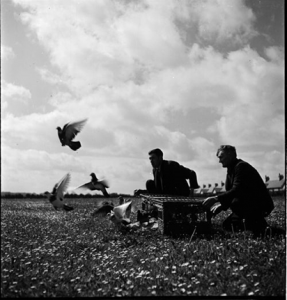Voices in the Coalshed: Pigeon Fancying

Pigeon’ keeping’ or’ fancying’, was known as the “poor man’s racehorse.” It was a common pastime for many in the mining community. Yet probably the most renowned pigeon fancier in the UK today is the Queen!
Breeding and showing pigeons remains a fiercely competitive pastime. Breeding pigeons to race is perhaps better understood
At first, it began as a simple, 10-mile race back to the coop. First man, with their bird, to arrive at the named shop or pub was the winner! Prizes were often gifts in kind. It developed into a more competitive affair, with large prize pots of money, when miners began to have more free time due to the 8 hour shift. Together with cheaper train travel, the art and science of breeding and caring for pigeons (pigeon fancying) grew.

It was an expensive pastime due to the cost of buying the pigeon, (£5-£20), specialised feed, racing clocks and baskets. Some shared costs by banding together, and transported their precious birds, in one wagon for despatch.
However, providing its home –the pigeon loft – could also be difficult. The pigeon loft was often not in the attic of miners’ homes. The space was cramped and damp and newer social housing forbid it. The pigeon loft or ducket (in the NE.) was usually a homemade affair built from left over wood and bits, brightly painted to attract the birds back home. For many it was sited in the backyard or allotment- a very different affair from Sandringham’s Royal Lofts.
There’s so much more to share about pigeon fancying and other pastimes but there were opportunities for the breadwinner to take time out from his family responsibilities.
Have you spotted any homing pigeons circling round near you?
Why not share your recollections of this activity, past or present with us?